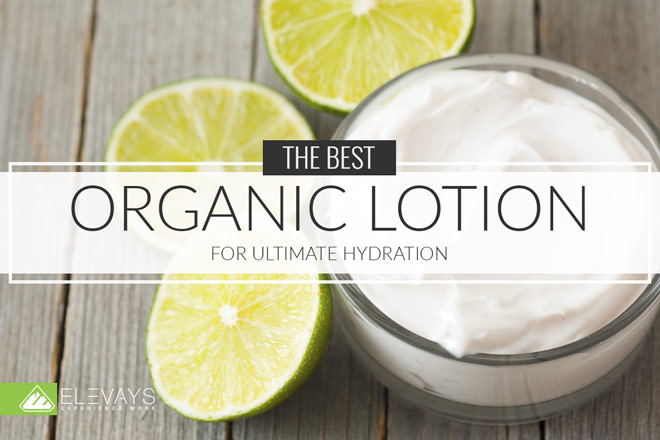One of the perks of growing older is becoming wiser. One of the downfalls of growing older is the inevitable demise of our skin. But look at it this way, since we are wiser we make better decisions when it comes to the personal care products we use.
Here’s the deal: aging skin loses moisture and elasticity way faster than our beloved younger skin. This results in dryness and a lack of radiance. One way (the best and most important way) to slow down this age train is with an all-natural and organic body lotion.
Remember, while it’s important to take care of the skin on our face, it’s also important to make sure we don’t leave the rest of our skin on the back burner. The skin on our arms and legs are exposed to the sun, environmental toxins and pollutants every day. Damage from the sun and pollutants cause sagginess, age spots, and wrinkles– yes, wrinkles aren’t just for your face. That’s why body lotion is a must.
TRUTH BOMB:
You’re
Already killing it!
If You Were More Consistent With Your Wellness Routine, You’d Be Unstoppable.
Choosing a body lotion without harmful chemicals can be hard considering that most of the lotions you find at the store are overflowing with harmful carcinogens, endocrine-disruptors, and other toxins making them unsuitable for your own and your children’s precious skin.
If it already wasn’t hard enough, so many lotions try and trick you with buzzword labels like “pure” and “natural”. Fortunately, I’ve done a lot of research so you can find the best organic lotion for you and your family. Keep reading so you can finally say goodbye to chemical-filled body lotions and hello to healthy hydrators.
How Does Lotion Work?
In 2008, a Harvard Health Letter pointed out that “moisturizer” isn’t a scientific term (1) and in fact, there’s not a lot of hard science to back up many of the claims lotion manufacturers make. Vitamins, for example, are often found in too small quantities to be useful, or they degrade when they’re exposed to oxygen and light. And since the government doesn’t regulate terms like “hypoallergenic” and “natural”– those mean nothing as well.
The way most commercial lotions work is they supply a small amount of moisture to the skin while creating a creamy or greasy layer with chemicals. Basically, the chemicals used in lotions create a fake appearance and a temporary feeling of moisture when in reality that appearance and feeling are both short-lived and it’s not long until you have to apply product again. If that wasn’t enough, common irritants found in lotions lead to unwanted side effects including dehydration in the long-run.
The good news is that a true organic lotion that is all-natural will have authentic ingredients that work to lock in moisture and hydrate the skin. When your skin is hydrated you slow down the aging process and eliminate common dry skin issues like itchiness and redness.
Issues With Conventional Lotion Ingredients
The Problem With Parabens
Parabens have been used for the past hundred years; unfortunately, that doesn’t make them safe. In the 1990s, studies began to pop up about parabens’ role as hormone disruptors.
We now know that parabens are estrogenic. This means that they can throw our hormonal balance out of whack by keeping estrogen from properly binding to our bodies’ estrogen receptors.
Parabens are found in all kinds of cosmetic and skin care products, including our lotions because they act as preservatives and help to keep ingredients shelf-stable.
In 2004, the Journal of Applied Toxicology published a study that looked at the amount of parabens inside breast tumors. Out of the twenty tumors analyzed, nineteen contained levels of parabens (2).
The European Union limits paraben use in cosmetics, but the USDA and FDA do not. Here are types of parabens that might show up on your lotion’s ingredient list:
- Methylparaben
- Ethylparaben
- Propylparaben
- Butylparaben
Is Fragrance Hiding Something?
Of all the weird and hard-to-pronounce words that show up on a lotion’s ingredient list, fragrance sounds like the least objectionable. However, fragrance is a term that covers up to 3,000 different ingredients that include carcinogens, endocrine disruptors, and irritants.
The Worst Offenders: Phthalates
One of the worst ingredients hiding under the “fragrance” label is phthalates. While phthalates are common here in the United States, they are banned in Europe, for some very good reasons.
Here are some of the problems associated with phthalate exposure:
- Phthalates have been linked to infertility in both men and women (3).
- Like parabens, phthalates are endocrine disruptors that can cause problems during the development of children in the womb and while they’re nursing (4)
- The Environmental Protection Agency (EPA) considers phthalates carcinogenic (3)
- Phthalates have been linked to ADHD, autism, and other neurological disorders (5, 6)
- Phthalates have caused cancer in some animal trials (3)
- Phthalates hidden in fragrances can also cause allergic reactions or worsen breathing, which creates dangerous conditions for people with asthma or other respiratory conditions, including children (7).
Is an Ingredient in Exhaust Hiding in Your Moisturizer?
Styrene is another toxin that might be lurking in your lotion if it’s made with synthetic fragrance. Styrene has been called a human carcinogen by the National Toxicology Program, results that were backed up in 2014 by a multi-government research collaboration called the Academy’s National Research Council (8).
To give you an idea of how disgusting styrene is, it’s also found in styrofoam, automobile exhaust, and cigarette smoke. Yuck!
Healthy Lotion Alternatives
Now onto the good stuff. There are amazing alternatives to chemical filled lotions that will actually get the job done. Chemical free body lotions are bursting with powerful organic ingredients that will keep your skin hydrated and radiant.
If you’re looking for some simple and effective swap outs, try some of these nourishing ingredients to hydrate your whole body:
- Shea butter is a great addition or base to any organic lotion. It is the fatty, oily substance that comes from the shea tree nut. The shea tree grows in West Africa and has been used traditionally for cosmetic and cooking purposes for years. We love it today for its ability to moisturize as well as help with muscle fatigue, prevent stretch marks, and solve dermatitis (9).
- Raw honey is a natural humectant, which means it draws moisture from the air into the skin when applied topically as an organic lotion. It’s also packed with antioxidants and kills bacteria naturally. It’s so effective it’s even used to treat wounds (10)!
- Olive oil is another great ingredient in your organic lotion. It’s full of beneficial fats, plus it contains powerful skin-boosting vitamins like A, D, E, and K (11).
- Coconut oil may be comedogenic for the face (meaning it could clog your pores), but that doesn’t mean you can’t use it everywhere else. This highly emollient oil is beneficial for the skin in many ways and is even helpful for healing irritations like eczema. In fact, straight coconut oil is one of my favorite ways to moisturize after a bath or shower.
- Aloe Vera is a super star ingredient that provides intense hydration. Aloe vera is the top option for people with super sensitive skin or skin irritation. If you struggle with eczema, red or angry skin or if you just got back from the beach and have sunburn, aloe vera will hook you up. Check out our other articles on Aloe Vera to discover even more benefits of the juicy plant.
The Best Organic Lotion
If you want to find a good name-brand lotion that is free of parabens, fragrance, phthalates and other toxic chemicals try one of these organic products below:
100% Pure
100% Pure has an amazing organic body lotion called French lavender Organic Whipped Body Butter. If that doesn’t already feel so sweet to say, customers rave their obsession and addiction to the divine lavender scent and lightweight application. This lotion is also a great source of antimicrobial and antioxidant properties ideal for anti-aging. A little bit of this will hydrate and protect you all day long. They also have blood orange, coconut, and honey almond options which are just as irresistible.
Alteya Organics
Rose Otto Organic Body lotion made by Alteya Organics is USDA Certified Organic made with potent organic rose oil. If you have sensitive skin or suffer with body acne/scars, this antibacterial, anti-aging, and anti-inflammatory lotion is the organic lotion for you. With other amazing ingredients like lavender, bergamot, shea butter, and olive oil– your skin will look thank you for the nourishment.
Pangea Organics
Pangea Organics Pyrenees Lavender with Cardamom Body Serum is full of antioxidants (cue sunflower, olive and jojoba oil) and two of our skin’s most favorite ingredients: vitamin E and lavender. If you have more mature skin, opt for this choice but make sure to get it while you can because it’s a fast seller.
Acure
Acure makes organic body lotion wallet friendly. For only $10 you can get their Ultra-Hydrating Organic Body Lotion. Made with high-quality ingredients like cocoa butter, argan oil, and rosehip seed oil you’re skin will be hydrated and smooth all day. This is a perfect option for the whole family because it’s unscented, affordable, and great for all skin types.
For beauty from the inside-out, check out our Beauty Collagen Complex. For ultimate hydration from the inside-out check out our Hydration Superfood Energy powder.
Now you’re all set! Go into your pantry to find your new organic body lotion or try an organic body lotion from above to get your skin right! Comment and let me know how you like it.
Sources:
- Harvard Health Publishing. (2008) Moisturizers: Do They Work? Harvard health letter. Retrieved from: https://www.health.harvard.edu/newsletter_article/moisturizers-do-they-work
- Darbre, P.D., Alijarrah, A., Miller, W.R., Coldham, N.G., Sauer, M.J., & Pope, G.S. (2004) Concentrations of parabens in human breast tumors. Journal of applied toxicology, 24(2004), 5-13. Abstract: https://onlinelibrary.wiley.com/doi/abs/10.1002/jat.958
- Latini, G., Del Vecchio, A., Massaro, M., Verrotti, A., & De Felice, C. (2006). Phthalate exposure and male infertility. Full text: https://www.ncbi.nlm.nih.gov/pubmed/16905236
- European Commission (2018). Phthalates May Affect Baby Boys. Retrieved from: http://ec.europa.eu/environment/integration/research/newsalert/pdf/7na1_en.pdf
- Engel, S. M., Miodovnik, A., Canfield, R. L., Zhu, C., Silva, M. J., Calafat, A. M., & Wolff, M. S. (2010). Prenatal phthalate exposure is associated with childhood behavior and executive functioning. Environmental health perspectives, 118(4), 565. Full text: https://www.ncbi.nlm.nih.gov/pmc/articles/PMC2854736/
- Kristof, N. D. (2010). Do Toxins Cause Autism? The New York Times, 219-225. Retrieved from: https://www.nytimes.com/2010/02/25/opinion/25kristof.html?_r=0
- Boyle, M. & Geller, S. (2016). Skip the fabric softeners. Retrieved from: https://www.ewg.org/enviroblog/2016/05/skip-fabric-softeners#.W5hLUJP27OQ
- 8.. Sigurdson, Tina. (2014). Expert panel confirms that fragrance ingredient can cause cancer. Retrieved from: https://www.ewg.org/enviroblog/2014/08/expert-panel-confirms-fragrance-ingredient-can-cause-cancer#.W5hJapP27OR
- Oliver, K. (2017) Repair Skin & Boost Collagen with Raw Shea Butter. Retrieved from: https://draxe.com/raw-shea-butter/
- Axe, J. (2018) Raw Honey Benefits for Healing + 20 Honey Uses. Retrieved from: https://draxe.com/the-many-health-benefits-of-raw-honey/
- Leonard, J. (2018) Is olive oil a good moisturizer for your face? Retrieved from: https://www.medicalnewstoday.









Thanks alot .haven’t heard of the methylparaben before. This article is rich I swear.
Glad this was helpful for you, thank you for reading!